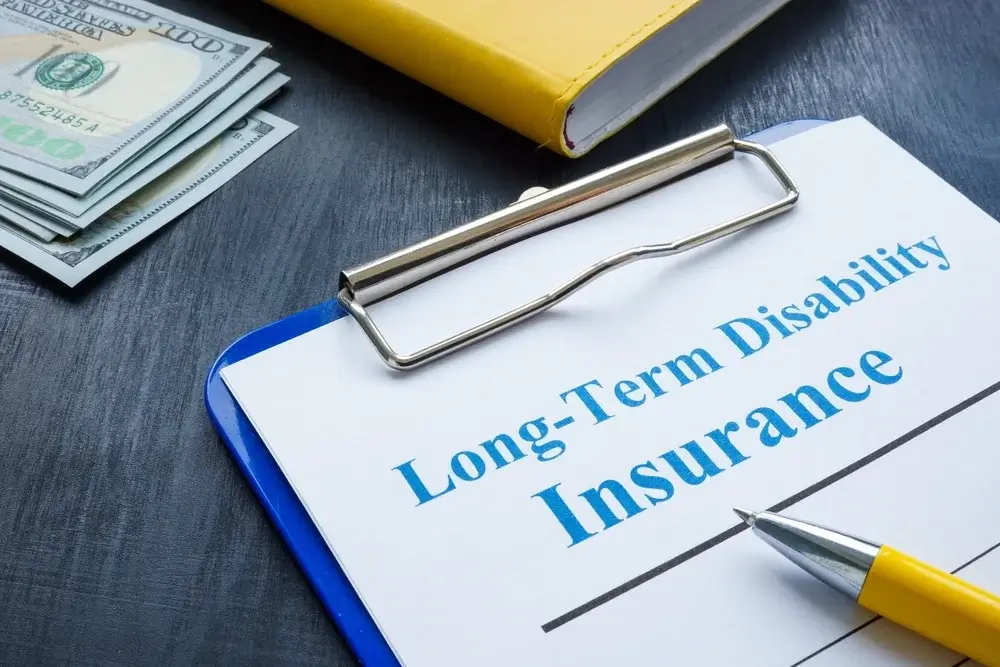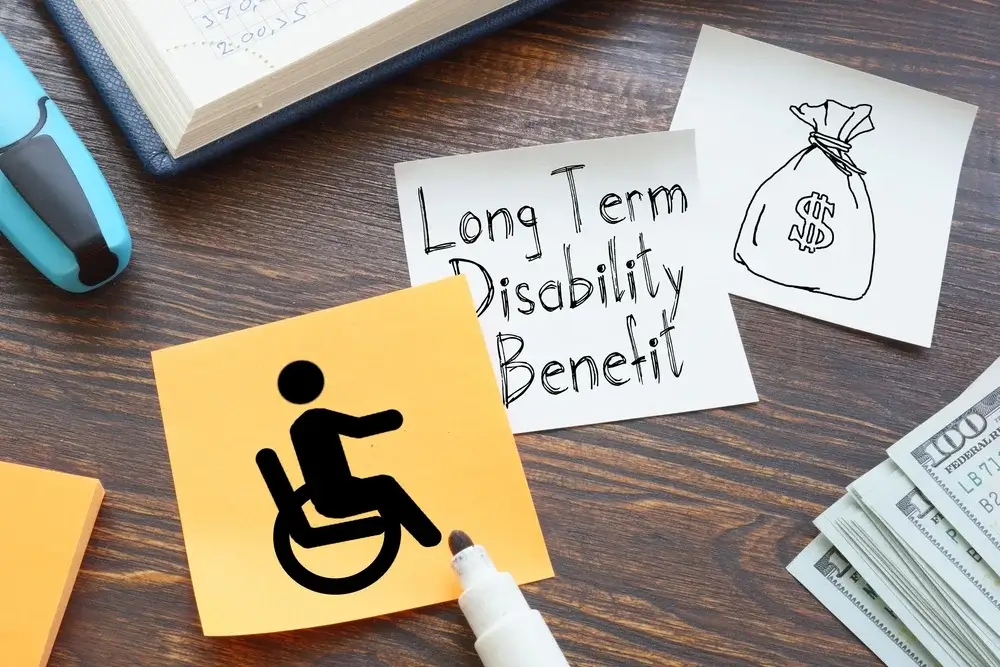Life is full of uncertainties. If an illness or injury prevents you from working, long-term disability insurance can protect your income, helping you stay on track with financial goals even through difficult times. This guide covers the essentials of long-term disability insurance, including how it works, qualifications, benefits, and how it aligns with Paradigm Life’s Perpetual Wealth Strategy™. Learn about key features, costs, and strategies to safeguard your income while building a resilient financial future.
What Is Long-Term Disability Insurance?

Long-term disability insurance (LTDI) is a type of insurance designed to replace a portion of your income if a health condition prevents you from working for an extended period. Unlike short-term disability policies, which typically cover a few months, long-term disability can last several years or until retirement. LTDI is particularly valuable for those who rely on steady income to support their lifestyle, save for the future, and secure financial independence.
By integrating disability insurance within a broader financial strategy, you ensure income continuity, supporting your long-term goals even if an unexpected disability arises.
How Does Long-Term Disability Insurance Work?
Long-term disability insurance serves as an income safety net, helping cover essential expenses when you cannot work due to a health condition. Typical policies replace between 50% and 70% of your income, allowing you to maintain financial stability during recovery.
Understanding the Elimination Period
Most long-term disability policies include an elimination period—a waiting period between the onset of your disability and when benefits begin. This period typically ranges from 30 to 180 days, during which you may rely on personal savings or short-term disability insurance. Choosing a longer elimination period can lower your premiums, but it’s essential to ensure you have other resources available during this waiting period.
Duration of Benefits
Long-term disability benefits last as long as the policy term specifies, from a few years up to retirement age, or even for a lifetime. Choosing a policy with a duration that aligns with your financial security goals can provide peace of mind and a stable income if a health condition prevents you from working long-term.
Types of Long-Term Disability Coverage

Long-term disability insurance coverage types vary, especially regarding how each policy defines “disability.” This can impact not only your eligibility for benefits but also the level of income protection you receive. Two main types of coverage—Own Occupation and Any Occupation—provide distinct advantages based on your profession and income needs.
Own Occupation Coverage
With Own Occupation coverage, you’re eligible for benefits if you can’t perform the specific duties of your current role, even if you’re capable of working in another field. This is especially beneficial for highly specialized professionals whose skills are not easily transferable, like surgeons or engineers.
- Example: A surgeon who can no longer perform surgeries due to an injury could still qualify for benefits, even if they can work in an alternate role, like teaching or consulting.
- Advantages:
- Specialized Security: Protects income from the specific job you’re trained for.
- Flexibility: Allows you to pursue other roles without losing benefits.
- Income Stability: Ensures income protection for those with specialized, high-earning careers.
Any Occupation Coverage
With Any Occupation coverage, you’ll qualify for benefits only if you cannot work in any role that matches your experience and skills. Though it has stricter requirements, this type of policy is typically more affordable and may be sufficient if your skill set is transferable across various roles.
- Example: An office administrator may need to be unable to work in any administrative capacity to qualify for benefits, making it harder to receive payments unless their disability prevents all related job functions.
- Advantages:
- Cost-Effective: Lower premiums compared to Own Occupation policies.
- Broad Coverage: Suitable for non-specialized roles, providing basic income protection.
Choosing the Right Coverage
Select the coverage type that best fits your role and income security needs. For specialized roles, Own Occupation policies may provide greater security, while Any Occupation policies work well for more versatile positions.
Qualifications for Long-Term Disability Insurance

Understanding eligibility criteria helps you select a policy that aligns with your needs. Key qualifications include:
Health Conditions Covered
To qualify, your condition must be long-term and prevent you from working. Covered conditions generally include:
- Chronic illnesses (e.g., cancer, heart disease)
- Injuries from accidents
- Mental health conditions, if covered
- Neurological disorders (e.g., Parkinson’s, epilepsy)
Elimination Period and Eligibility
The elimination period (typically 30 to 180 days) is required before benefits begin. Many policies allow partial benefits if you’re able to work part-time, offering some flexibility in income.
Understanding Long-Term Disability Costs and Benefits

The cost of long-term disability insurance varies based on factors like age, income, occupation, and policy specifics. While the best disability insurance offers reliable protection at an affordable price, it’s essential to balance the cost with your income needs and career considerations.
Income Replacement
Long-term disability insurance usually replaces between 50% and 70% of your pre-disability income, helping cover:
- Mortgage or rent payments
- Utilities and daily expenses
- Medical costs not covered by health insurance
Partial vs. Total Disability
Many policies distinguish between partial and total disability, allowing for income support if you’re able to work part-time but not at full capacity. This flexibility can be beneficial during recovery or transition periods.
How Long-Term Disability Insurance Supports Your Financial Strategy

This disability insurance is a key component of the Perpetual Wealth Strategy™. By ensuring that you maintain a steady income in times of health challenges, it supports cash flow continuity, a critical part of building long-term financial security. Here’s how it integrates into the bigger picture:
- Protecting cash flow: A stable income through disability insurance helps you stay on track with financial obligations without depleting savings.
- Safeguarding wealth-building goals: Disability insurance prevents financial setbacks, allowing you to continue wealth-building efforts even during health challenges.
- Financial independence: This coverage reduces the need to rely on others or tap into other assets during periods of limited income, aligning with the independence-focused ethos of the Perpetual Wealth Strategy™.
Planning for the Unexpected with Long-Term Disability Insurance
Long-term disability insurance empowers you to manage life’s uncertainties, providing stability and protecting your financial future. As part of Paradigm Life’s holistic approach, it reinforces your financial foundation, ensuring that you’re prepared for unexpected health challenges.
For guidance on how disability insurance fits into a comprehensive wealth strategy, reach out to a Paradigm Life Wealth Strategist. We’re here to help you tailor a plan that aligns with your long-term goals, supporting financial independence and security through life’s unpredictable moments.
FAQs about Long-Term Disability Insurance
How long do long-term disability benefits last?
Benefits can last anywhere from a few years to until retirement age, depending on your policy’s terms.
Can self-employed individuals get long-term disability insurance?
Yes, self-employed individuals can purchase private long-term disability insurance to protect their income.
Can I have both short-term and long-term disability insurance?
Yes, short-term insurance covers the initial period of disability, while long-term insurance provides extended coverage afterward.
Is long-term disability insurance taxable?
The taxability depends on how the premiums are paid. Employer-paid premiums generally result in taxable benefits, while those paid with after-tax dollars are typically tax-free.







